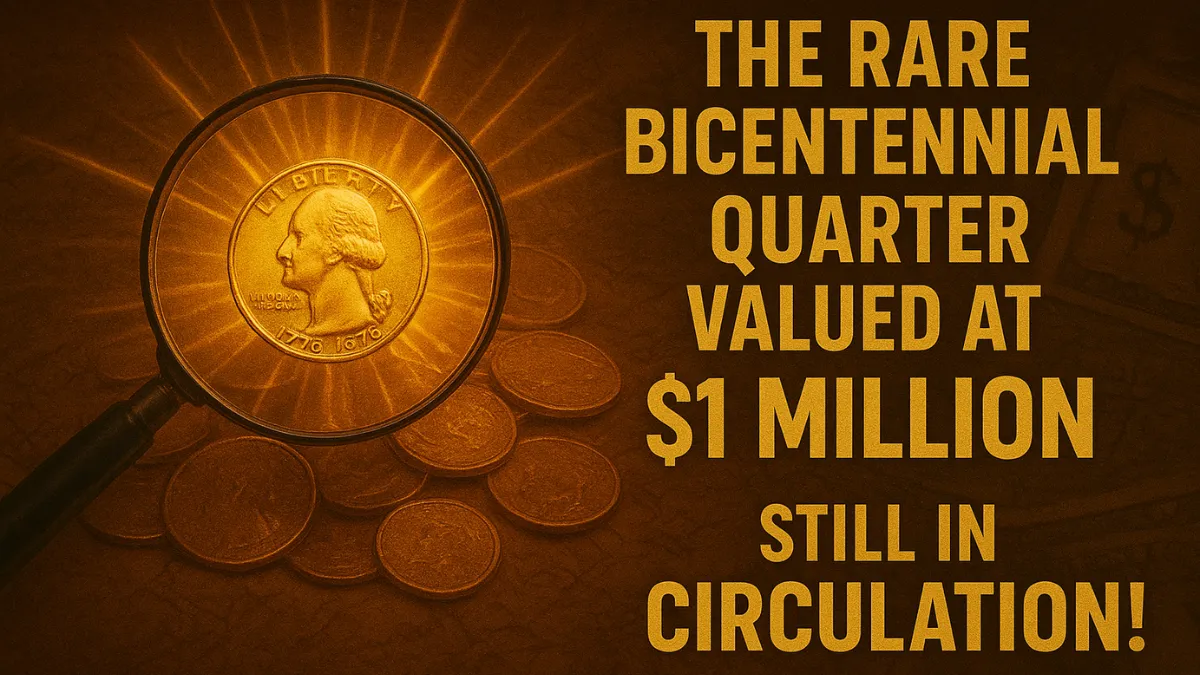For coin collectors and curious hobbyists, the allure of a hidden fortune in everyday change remains ever captivating. Among the most enticing legends of American coinage is the story of the Bicentennial Quarter—one specimen rumored to be worth as much as $1 million.
This article explores the facts behind these claims, the true rarity of special Bicentennial Quarters, and how to spot genuine value in your pocket change, offering practical insights for seekers and numismatists alike.
Bicentennial Quarter: A Symbol of Celebration
The United States Mint released the Bicentennial Quarter in 1975 and 1976 to commemorate the country’s 200th birthday. These coins stand out with their distinctive reverse design: a Colonial drummer, victory torch, and dual date “1776-1976.”
Over a billion were minted in Philadelphia, Denver, and San Francisco, making them common sights in circulation. For many, these quarters symbolize national pride and historical significance, often kept as keepsakes rather than investments, yet select varieties attract intense interest due to their unique properties or errors.
What Makes a Bicentennial Quarter Rare—and Valuable?
Claims of a $1 million Bicentennial Quarter typically stem from extraordinary conditions: remarkable minting errors, extremely high-quality proof specimens, or rare metallic composition. Notable errors include off-center strikes, double dies, and coins mistakenly struck on different planchets (metal blanks), which can lead to dramatic increases in value among collectors.
Silver versions minted for collector sets, especially those in pristine “proof” condition from the San Francisco Mint, also fetch higher prices. However, for a quarter to approach—or exceed—$1 million, it must be authenticated, historically significant, and exceedingly rare, with confirmed public sales of such value being extremely uncommon.
How to Identify a Potentially Valuable Bicentennial Quarter
Begin by inspecting the coin for visible clues: sharp designs, unusual coloration, incorrect dates or mint marks, and physical anomalies such as doubled images or missing details. Silver strikes have a distinguishable edge and shine. Rarity increases dramatically for verified errors and original proof coins that appear untouched.
If you suspect a rare find, avoid cleaning or damaging the coin; professional grading and authentication by experts at organizations like PCGS or NGC is essential. While most Bicentennial Quarters are worth only face value, key errors or rare mint varieties can yield impressive returns for patient and knowledgeable collectors.
Tips for Coin Collectors and Treasure Hunters
Collecting coins is both a rewarding hobby and, potentially, a lucrative investment. Stay informed about current trends and documented rare coins by joining numismatic societies and reading reputable coin guides. Always handle coins gently and store them properly to preserve their condition. Network with trusted dealers and attend coin shows or online forums for expert opinions and news on fresh discoveries.
If you inherit a collection with Bicentennial Quarters, research their dates, conditions, and provenance before seeking appraisals. Knowledge, persistence, and the thrill of the hunt are your best assets in the quest for coin treasures.
Conclusion: Hidden Value in Everyday Change
While the odds of discovering a $1 million Bicentennial Quarter are incredibly slim, the pursuit itself illuminates the fascinating history and artistry behind American currency. Every rare coin tells a story—about its time, its makers, and those who find it. For today’s collectors, searching for Bicentennial rarities heightens appreciation for both common and extraordinary finds, proving that treasure-seeking in spare change is as much about curiosity and learning as potential financial reward.
